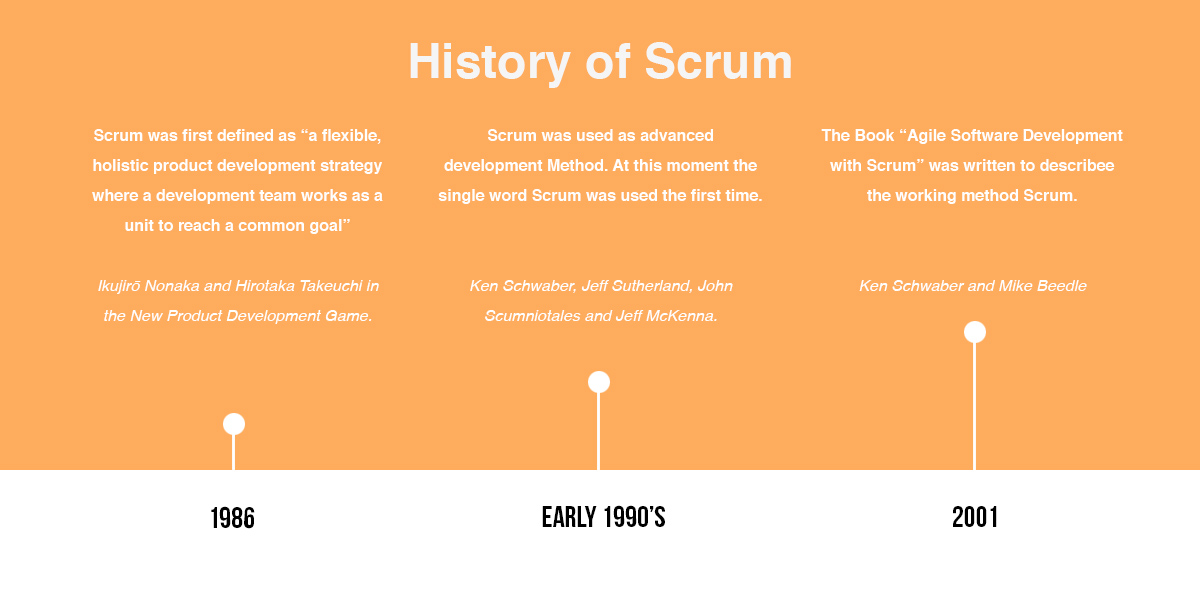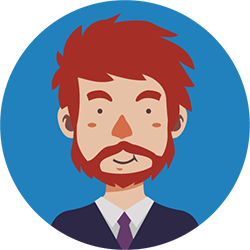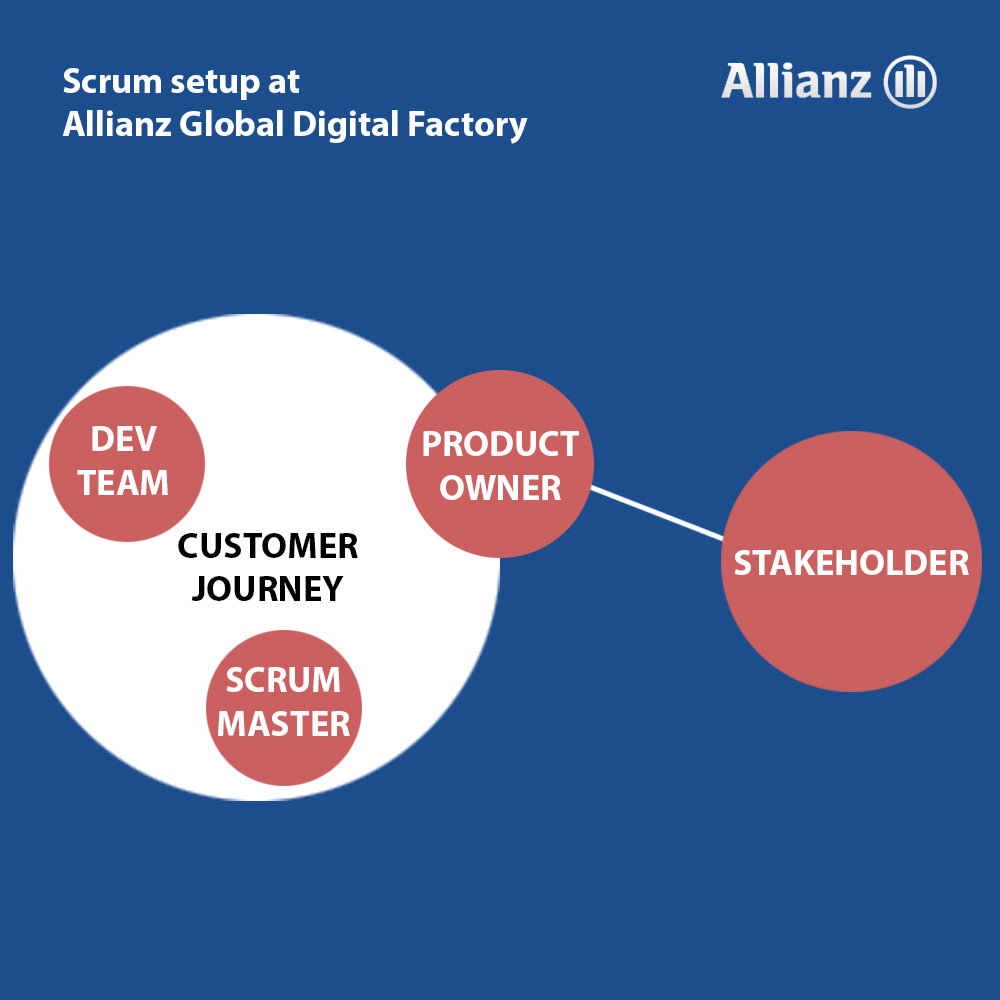Scrum is getting more and more popular. And that is not surprising. Its clear distribution of roles and its easy structure enables its principles to be adopted quickly and used efficiently.
This agile project management working methods fits perfectly into the Allianz GDF. Due the fact that the GDF enables digitizing Allianz companies, it is important that it works quickly and precisely. In fact, the GDF has 8 different customer journey to take care of. For this reason, it is necessary to have a working method that is flexible and suitable, easy and iterative.
Additionally, it provides a good overview of the overall factory progress in delivering various use cases, enabling Allianz entities worldwide to bring a better value to their end-customers as well as expand their customers base.
At the same time, it provides an internal learning platform, where knowledge is the most valuable asset. Due it's points of intersection on the one hand and all insights which the GDF gets on the other hand, Scrum also promotes the progress of improvement of it's own working method to become the perfect solution for the factory. Read here an article from our Head of Development, Des Field Corbett, about how we approach Scrum at the GDF to make working at the Factory not like working at a factory.
Curious about more working methods? Check out our UX Lab article to find out how the GDF builds user centric solutions. Or you follow #AllianzGDF at LinkedIn to never miss any update again.
Stay tuned!





